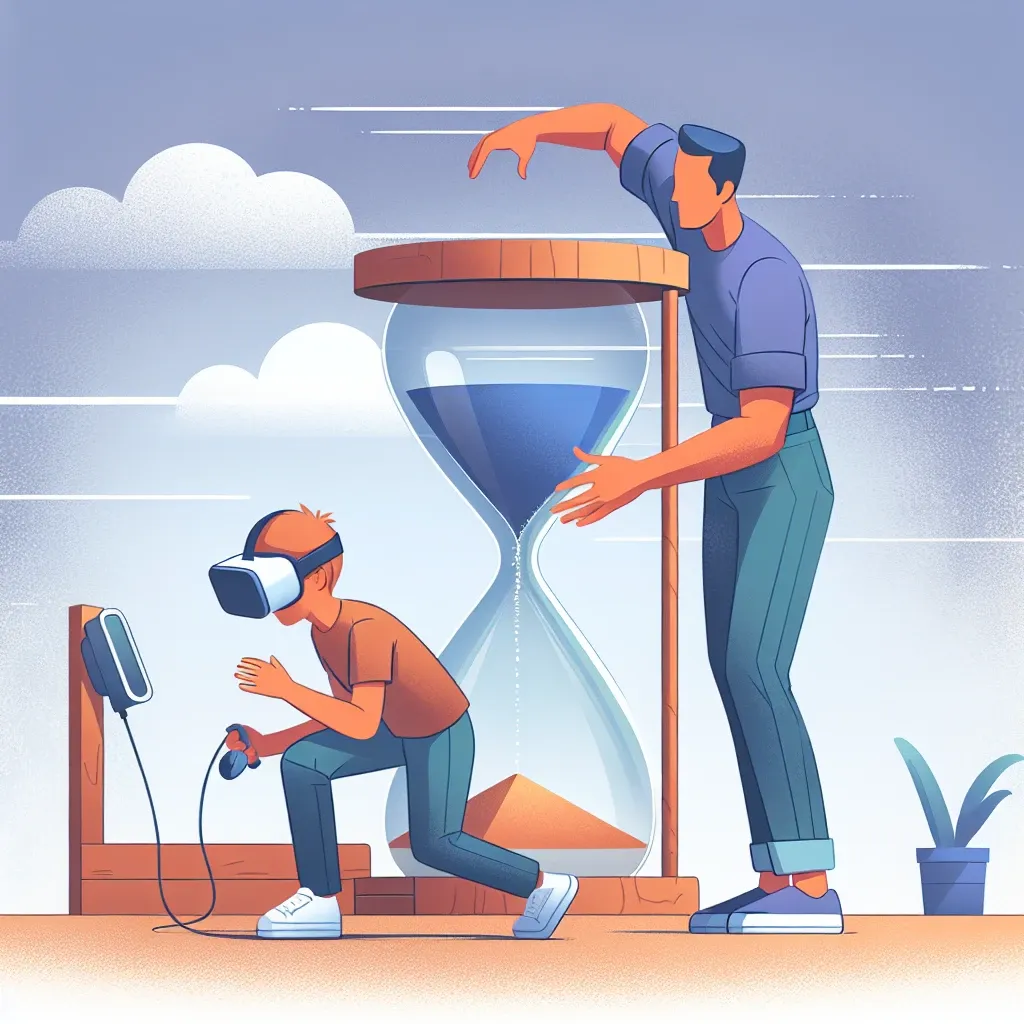Introduction
As virtual reality (VR) continues to gain traction in the gaming and entertainment industries, the need for responsible usage, particularly among younger audiences, has become paramount. In response to concerns regarding excessive screen time and the potential impacts on mental well-being, Meta has introduced a new feature dubbed “parent mode” to its VR platform. This article delves into the significance of this feature, its implications for families, and how it aims to foster safer VR experiences for children and teenagers.
The Rise of VR in Daily Life
Virtual reality technology has evolved from a niche market into a mainstream phenomenon. From gaming to education, VR has found applications across various fields. With projections estimating that the VR market could reach $57.55 billion by 2027, the technology is becoming increasingly integrated into our daily lives. However, with this growth comes the responsibility of ensuring safe and controlled usage, especially for younger users.
Understanding the Risks of VR Usage
- Excessive Screen Time: Prolonged VR sessions can lead to fatigue, eye strain, and even headaches.
- Immersive Experiences: The immersive nature of VR can sometimes lead users to lose track of time, resulting in longer sessions than intended.
- Health Concerns: Studies have shown that excessive use of VR can affect mental health, particularly among teenagers.
Introducing “Parent Mode”
Meta’s parent mode aims to address these issues head-on. The feature allows parents and guardians to establish time limits on VR usage, ensuring that young users engage with the technology in a healthy and balanced manner.
Key Features of Parent Mode
- Session Time Limits: Parents can set specific time limits for VR sessions, helping to manage how long children spend immersed in virtual environments.
- Usage Reports: The feature provides parents with insights into their child’s VR usage, enabling them to discuss and adjust time limits as necessary.
- Content Controls: Parents can restrict access to certain VR experiences based on their appropriateness for different age groups.
The Importance of Parental Control
The introduction of parent mode underscores the importance of parental control in the digital age. With access to immersive technologies growing, it is crucial for parents to have tools that allow them to guide their children safely. According to a 2023 report by the American Psychological Association, the average teenager spends more than 7 hours a day on screens, highlighting the necessity for balance.
The Pros and Cons of Parent Mode
Pros
- Promotes Healthy Habits: By enforcing limits, parents can help children develop a balanced relationship with technology.
- Encourages Family Interaction: Setting time limits can prompt families to engage in other activities, fostering stronger relationships.
- Informs Parents: Usage reports give parents visibility into their child’s behavior, encouraging discussions about healthy technology use.
Cons
- Potential Resistance: Some children may resist limitations, leading to conflicts between parents and kids.
- Overreliance on Technology: There is a risk that parents may become overly dependent on technological solutions instead of engaging with their children about responsible VR usage.
How to Implement Parent Mode
To make the most of parent mode, parents should follow these steps:
- Access the Settings: Open the VR application and navigate to the settings menu.
- Select Parent Mode: Choose the parent mode option to begin the setup.
- Set Time Limits: Determine appropriate daily or weekly limits based on your child’s age and lifestyle.
- Monitor Usage: Regularly review usage reports and make adjustments as necessary.
Future of VR and Parenting
As technology continues to evolve, the landscape of parental controls is expected to follow suit. The implementation of parent mode is just the beginning of Meta’s efforts to ensure a safe VR environment. With ongoing advancements, features may include AI-driven recommendations for balanced usage and more comprehensive content filtering options.
Expert Opinions
Experts in child psychology have lauded Meta’s initiative, with Dr. Emily Chen, a child psychologist, stating, “Having tools that empower parents to monitor and control their children’s VR exposure is crucial in today’s digital landscape. It allows for better communication and understanding between parents and kids regarding technology use.”
Real-life Impacts of VR Parenting Controls
Parents who have utilized parent mode report positive changes in their households. For instance, the Johnson family from California shared their experience:
“Since we started using parent mode, our kids have been more engaged in family activities. We set time limits that encourage them to take breaks and spend time outdoors, which has been great for their well-being!”
Cultural Relevance
The introduction of VR technologies and their controls speaks to a broader cultural shift towards digital parenting. Families are increasingly navigating the challenges posed by advanced technologies, making tools like parent mode not just useful, but essential.
Conclusion
Meta’s parent mode is a significant step in promoting healthy VR use among children and teenagers. With features designed to facilitate parental involvement, the tool addresses the burgeoning concerns associated with excessive screen time, while encouraging a balanced approach to technology. As we look towards the future, such innovations are vital in fostering a safer, more conscientious digital environment for the younger generation.

